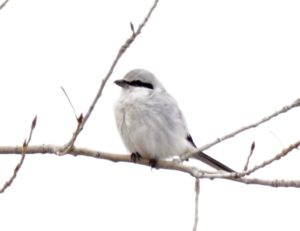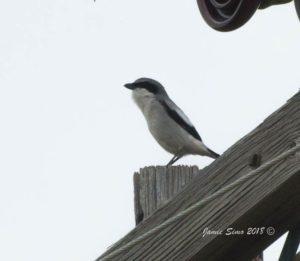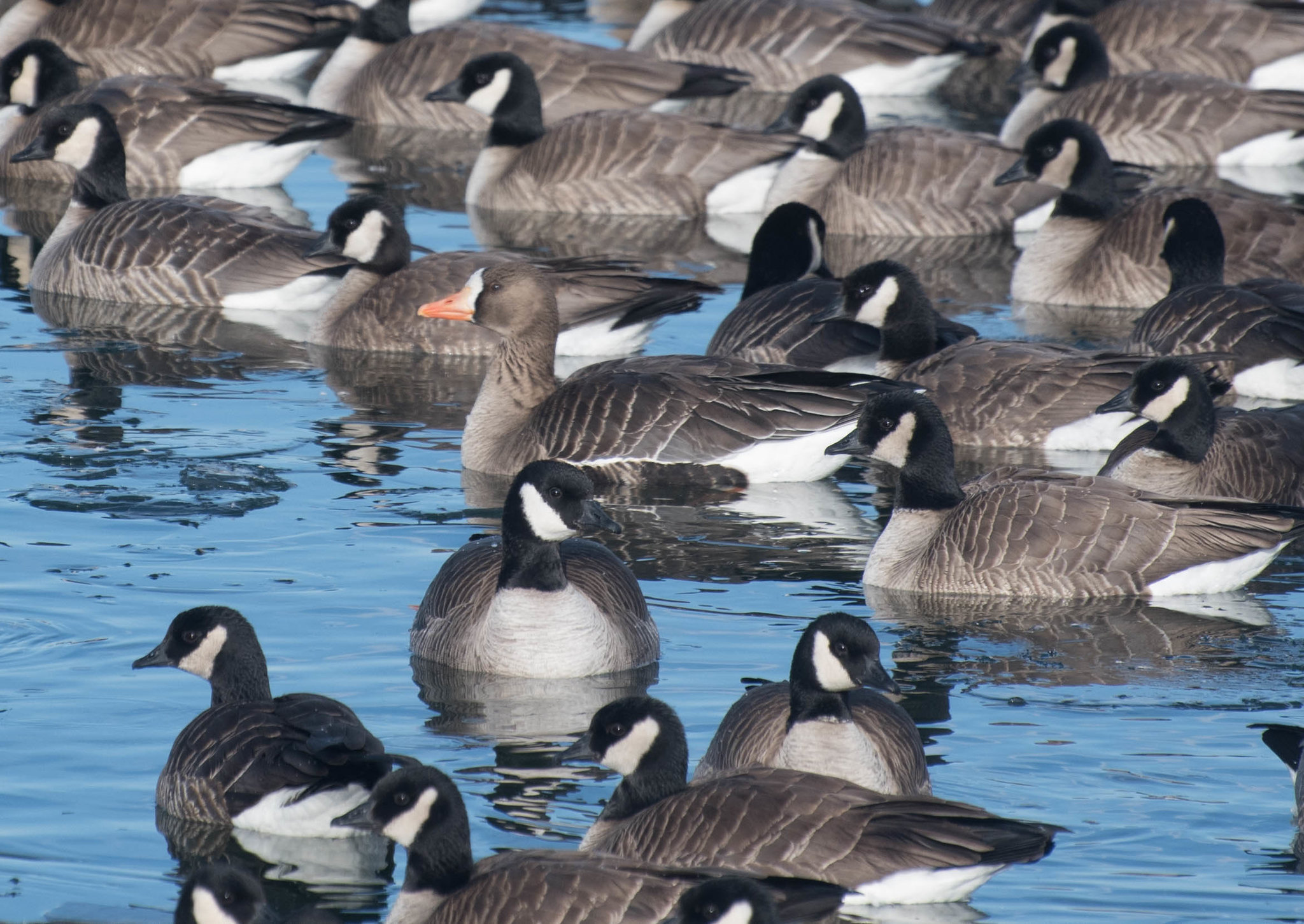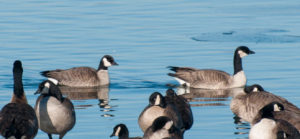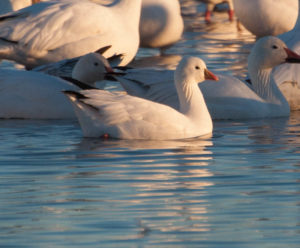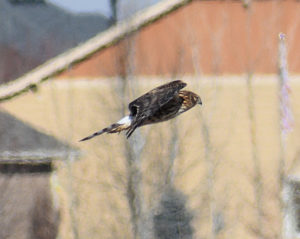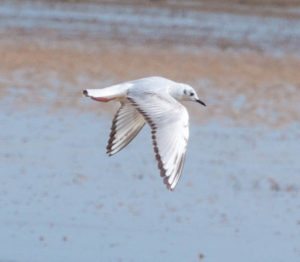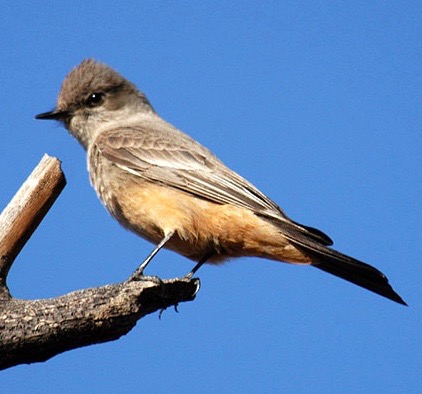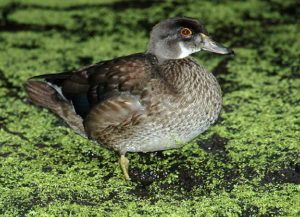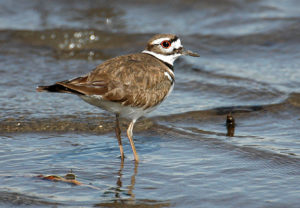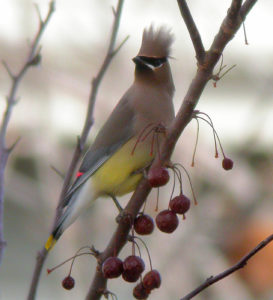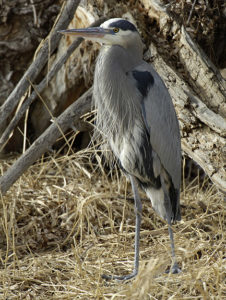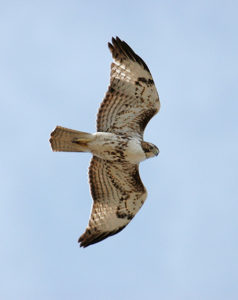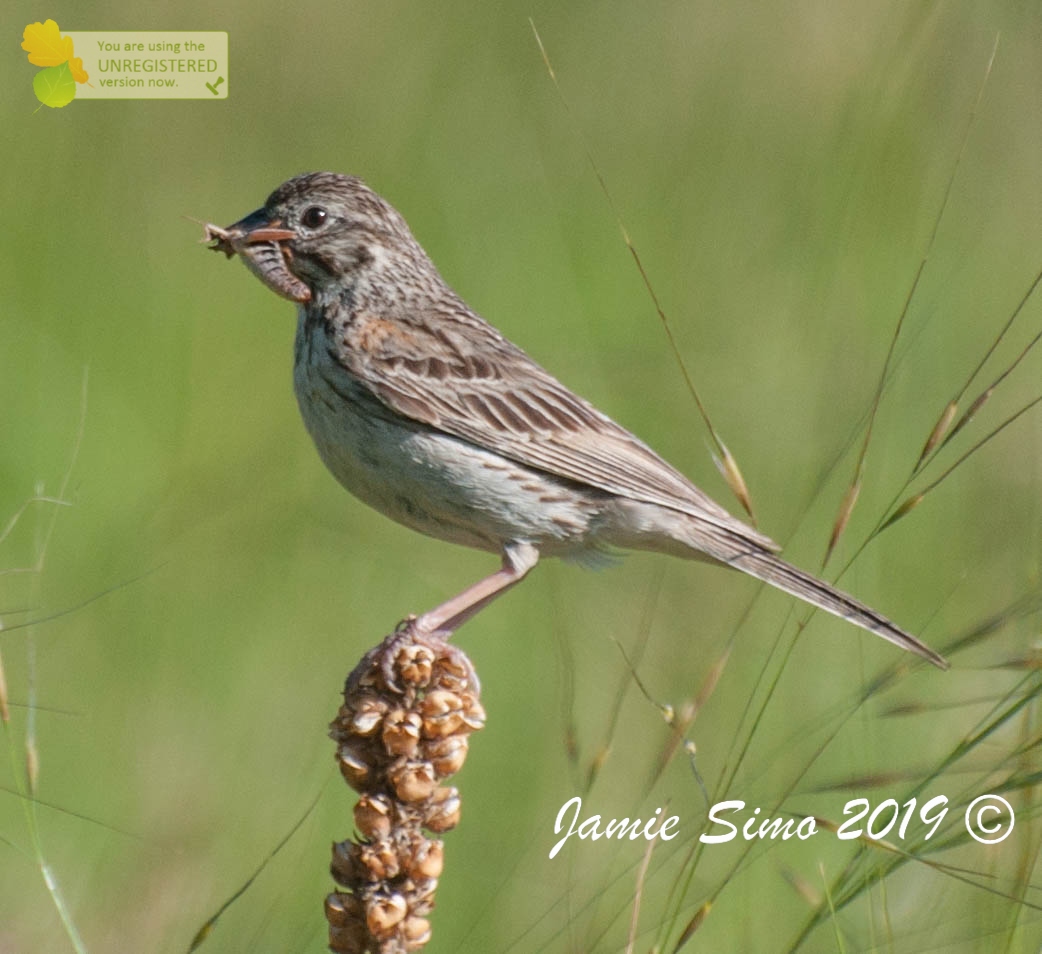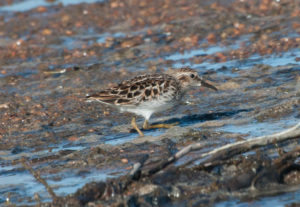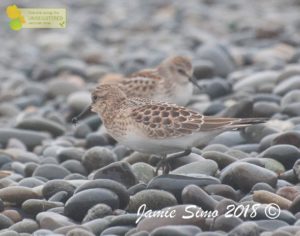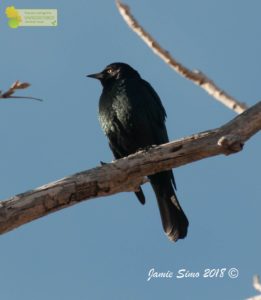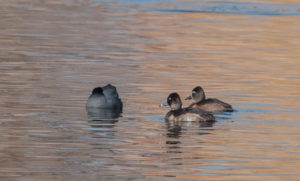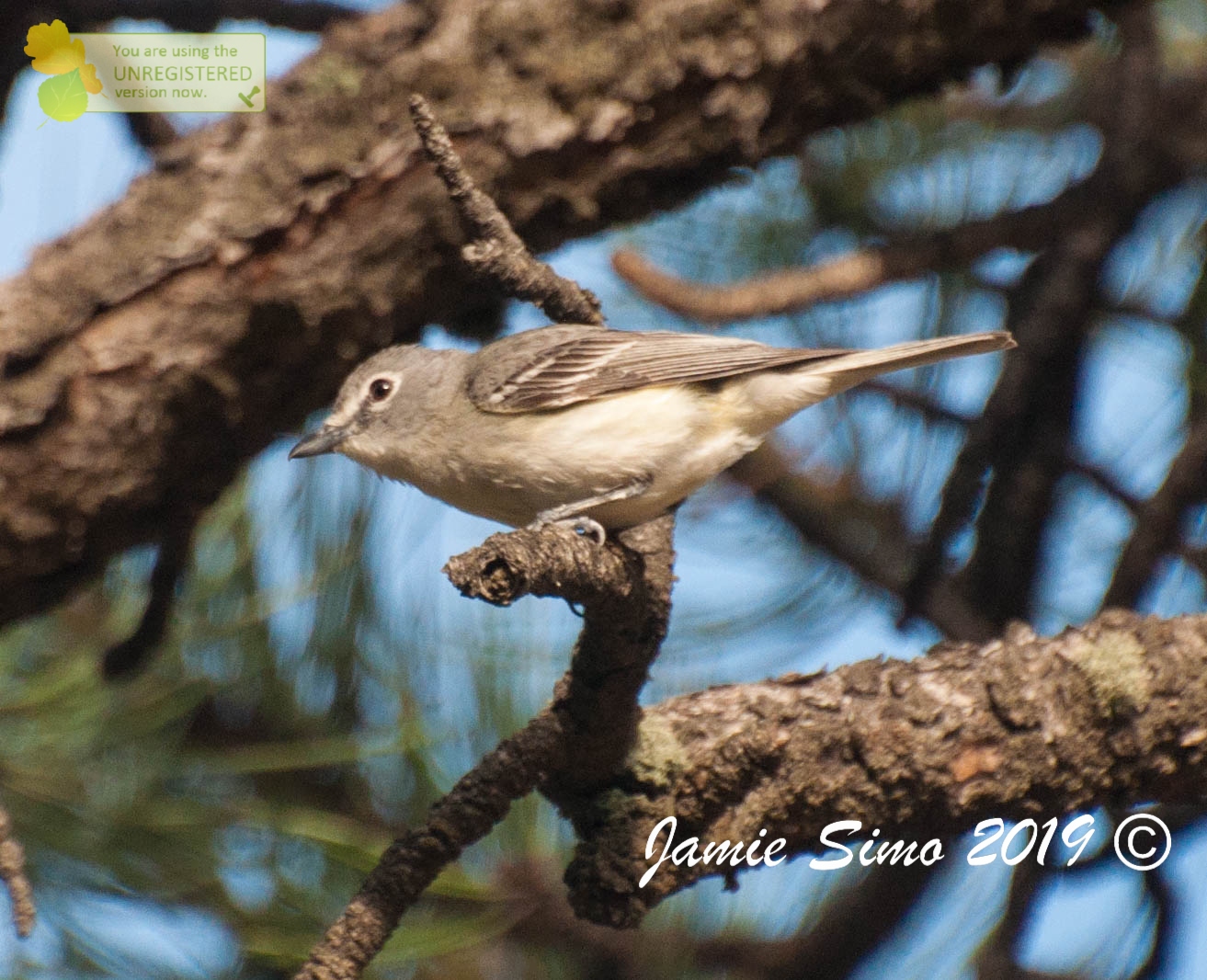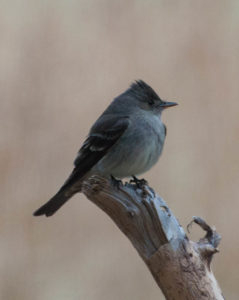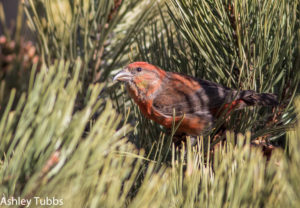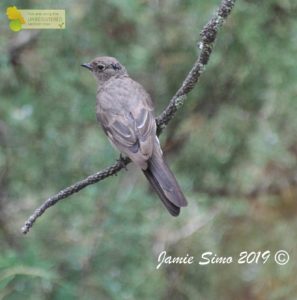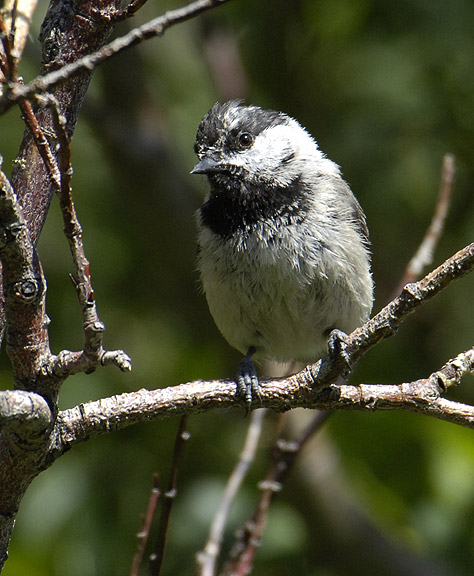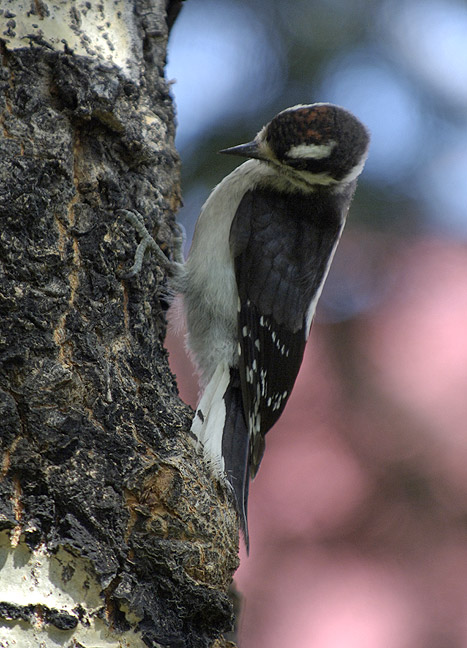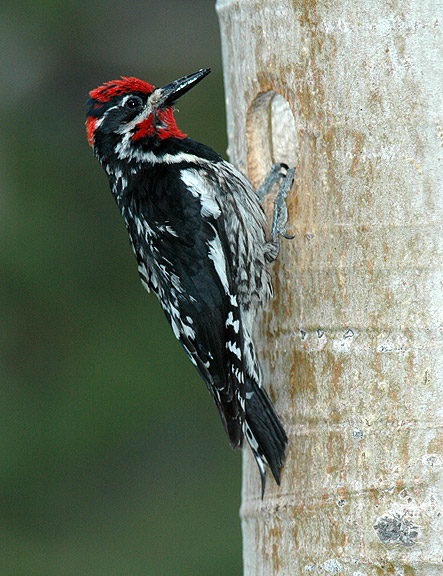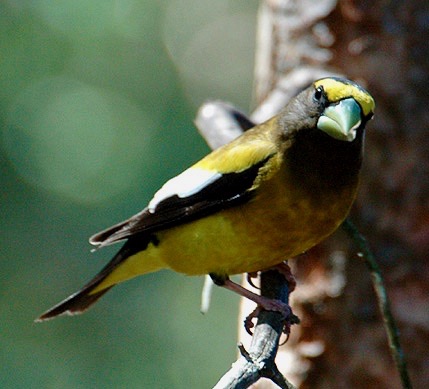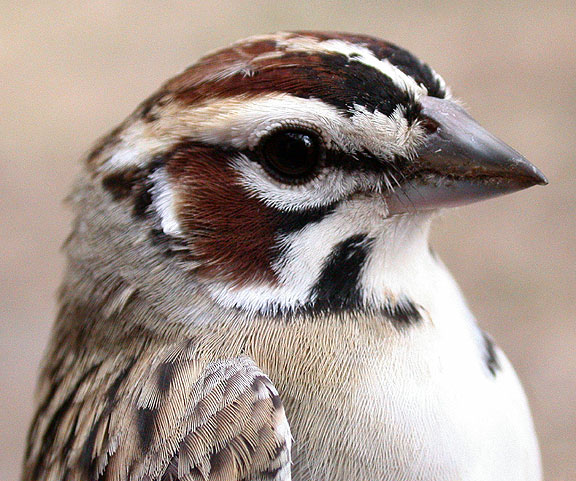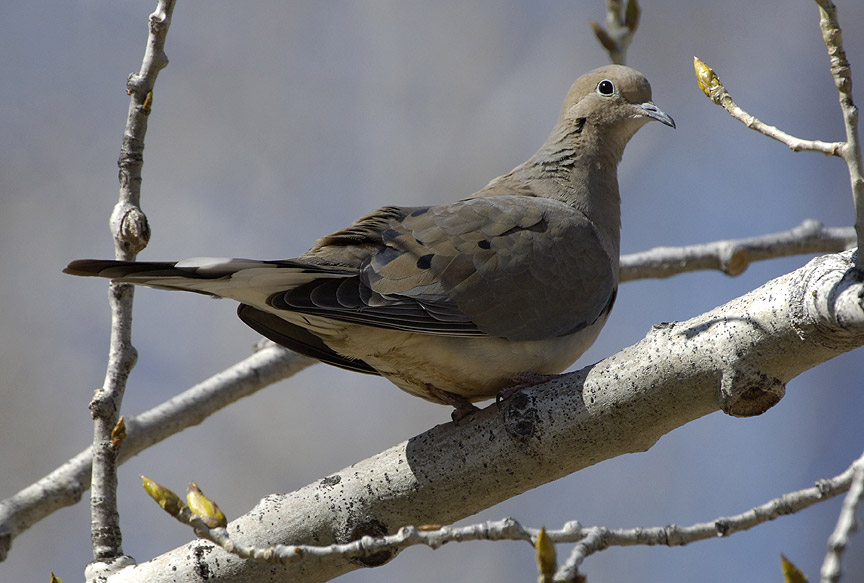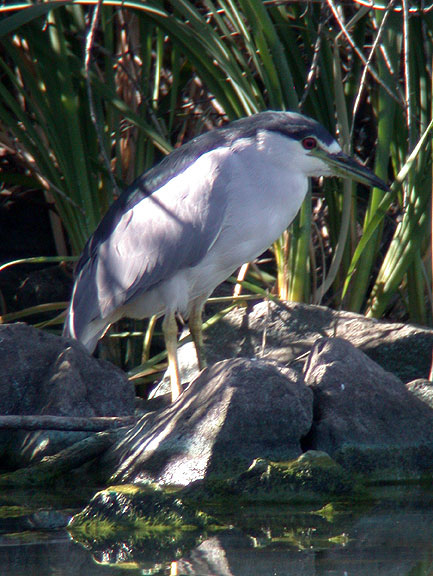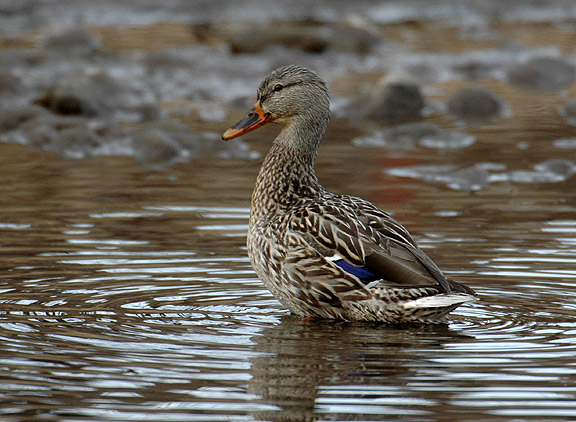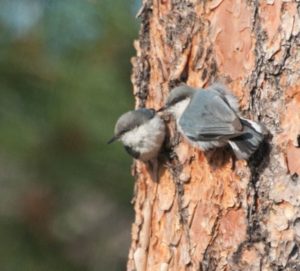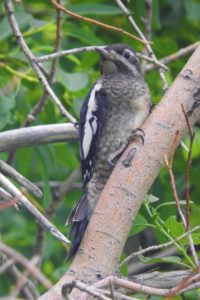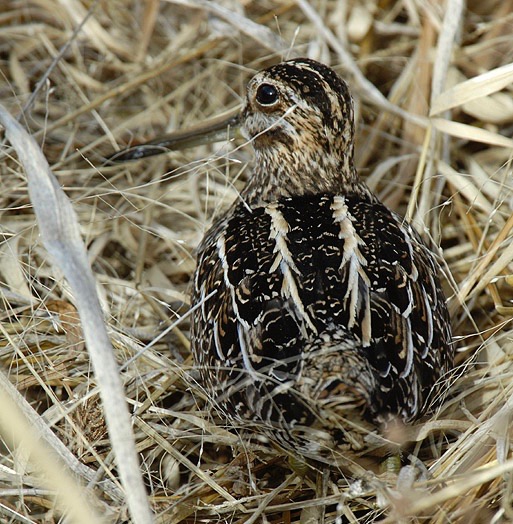

Savannah Sparrow (c) Bill Schmoker
Meyer Ranch provides a wonderful array of habitats – montane meadow, montane shrubland, mid-elevation willow carr, mixed aspen-conifer forest, pure aspen forest, ponderosa pine forest, Douglas-fir forest, lodgepole pine forest, wetlands, stream, cliffs, bridges, culverts, power poles, etc…. WHEW! In turn, this wide array of habitats results in a wide array of birds, particularly during breeding season. Remember that getting to know your habitats will help you become a better birder.
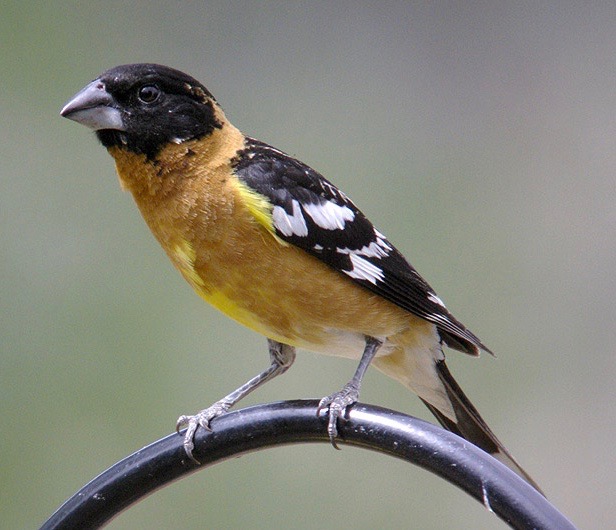
Black-headed Grosbeak (c) Bill Schmoker
I arrived at Meyer Ranch about 45 minutes before my group showed up from the Front Range Birding Company, and in that time recorded about 25 species. Unfortunately, seven of these did not remain around for the group – Say’s Phoebe, Steller’s Jay, Common Raven, Hermit Thrush, Pine Siskin, Red Crossbill, and Black-headed Grosbeak. However, once the group was there, we had our own suite of birds, including about ten that I had failed to see earlier. So it goes in the birding world.

Cliff Swallows (c) Bill Schmoker
Even before we got out of the parking lot, we could see that someone had knocked down all the Cliff Swallow nests on the US 285 bridge over South Turkey Creek Road. A sad piece of news, since back in mid-May over one hundred Cliff Swallows were recorded in this area. So, here’s the scoop on the removal of these nests. This was done by the Colorado Department of Transportation (CDOT), and in compliance with the Migratory Bird Treaty Act (MBTA). This means that as long as birds had not initiated egg-laying, CDOT was playing by the rules. Their approach, which began in April this year, was to remove old nests in anticipation of construction projects scheduled for this summer. They then continued to remove nests, as birds started to rebuild, in an attempt to discourage them from nesting in that area, which seemed to eventually work.
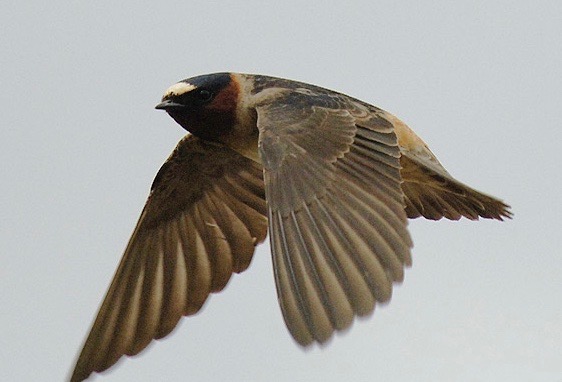
Cliff Swallow (c) Bill Schmoker
The reason for needing to discourage Cliff Swallows from nesting on the bridges is that if the birds are nesting at the time that a project eventually gets rolling, and that project then, subsequently creates a problem for the birds, then CDOT realizes that they would not be in compliance with the MBTA. So, they try to be proactive. It appears that there have been a number of projects along US 285 this year, so I think we need to give CDOT the benefit of the doubt, at least for this year. What’s not clear is how much this could be anticipated to be an annual event, and whether there will be future years when the swallows will be allowed to breed once again with no disruptions.
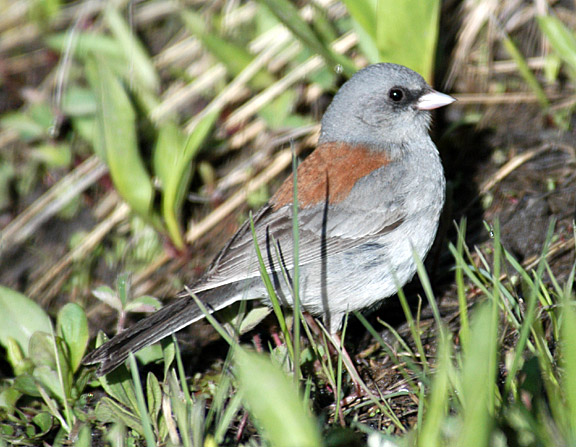
Dark-eyed (gray-headed) Junco
Getting on with our walk, we had a number of highlights, including getting to see and hear singing Savannah Sparrows from very close. We also got to hear two Williamson’s Sapsuckers calling and a Vesper Sparrow but failed to see them. We had a nice variety of plumages for Yellow-rumped (Audubon’s) Warblers from a brightly colored male to a very drab first-year bird. We definitely enjoyed getting to see a pair of Dark-eyed (Gray-headed) Juncos taking turns bringing in beak-fulls of food to their nestlings. The latter we couldn’t see, but we could definitely tell where their ground nest was. Finally, as a final treat we got to briefly hear a Wilson’s Snipe calling.
Of course, at this time of year we also spent a good amount of time enjoying the great variety of flowers. The columbine are reaching their peak.
Good birding!
Chuck
Meyer Ranch, Jul 6, 2019
26 species
Broad-tailed Hummingbird 11
Wilson’s Snipe 2
Williamson’s Sapsucker 2
Hairy Woodpecker (Rocky Mts.) 1
Northern Flicker (Red-shafted) 2
Dusky Flycatcher 1
Cordilleran Flycatcher 2
Empidonax sp. 1
Warbling Vireo 6
Violet-green Swallow 3
Barn Swallow 8
Cliff Swallow 4
Mountain Chickadee 2
White-breasted Nuthatch 1
Brown Creeper 1
House Wren 3
Ruby-crowned Kinglet 8
Mountain Bluebird 2
American Robin 7
Chipping Sparrow 7
Dark-eyed Junco (Gray-headed) 9
Vesper Sparrow 1
Savannah Sparrow 3
Song Sparrow 4
Red-winged Blackbird 5
Yellow-rumped Warbler (Audubon’s) 4
Western Tanager 1


